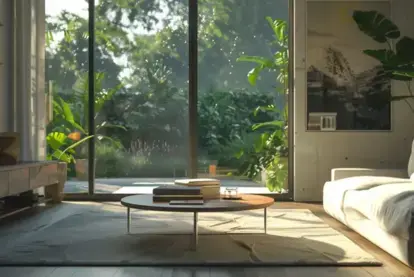
What to Do After Mold Remediation
Contact COIT for a professional cleaning!
Mold remediation is an important step toward a healthy living environment, but the journey doesn't end once the mold is removed.
Understanding what to do after mold remediation is essential for homeowners to maintain a mold-free home and prevent its recurrence. This article will guide you through the necessary steps to take post-remediation and make sure you have lasting results and a safe, clean environment.
Conduct a Thorough Inspection
After mold remediation, the first step is to confirm that all mold has been effectively removed. This involves a detailed inspection by a qualified professional.
A comprehensive mold inspection after remediation ensures that the affected areas are mold-free and that the remediation process has not inadvertently spread spores to other parts of your home.
The inspection might include surface sampling and air quality tests to detect any remaining mold spores, as well as a visual examination of previously affected areas and adjacent spaces to ensure no cross-contamination has occurred.
Inspectors might also use moisture meters and thermal imaging cameras to identify hidden sources of moisture that could lead to any future mold growth.
Maintenance and Prevention Strategies
Maintaining a mold-free environment requires ongoing effort. Here are some tips to keep your home safe and healthy:
- Control Humidity Levels: Mold thrives in moist environments. Use dehumidifiers and air conditioners to keep humidity levels low, ideally between 30-50%.
- Ensure Proper Ventilation: Ventilate bathrooms, kitchens, and laundry areas where moisture is commonly generated to prevent mold growth.
- Fix Leaks Promptly: Water leaks from pipes, roofs, or windows can contribute to mold growth. Repair all leaks as soon as they are discovered.
- Clean Regularly: Dust and dirt can hold moisture and nutrients for mold. Regular cleaning helps prevent mold from taking hold and helps with mold removal.
Is a House Safe After Mold Remediation?
Post-remediation, it's natural to question the safety of your home. The short answer is yes, your house should indeed be safe, as specialists follow strict protocols to remove mold thoroughly and prevent its return.
Continuous monitoring and maintenance after the process helps ensure that your home remains a safe haven free from mold-related hazards. To feel safe, you can conduct air quality assessments to check for residual spores.
We also recommend doing health checks for occupants, especially those with respiratory conditions or mold allergies, to confirm that the environment is no longer causing symptoms.
How Long to Ventilate After Cleaning Mold?
Ventilation is key during and after mold cleaning. It's recommended to ventilate the area for at least 24-48 hours after remediation. This helps clear any airborne spores and chemical smells after mold remediation for a safer breathing environment.
Contact COIT for a professional cleaning!
How Do You Clean Your House After Mold Remediation?
Your post-remediation cleaning should be thorough and focus on removing any dust or spores that might have settled during the process.
Use damp cloths to clean surfaces and a HEPA-filter vacuum to clean carpets and upholstery. Avoid stirring up dust to prevent spores from becoming airborne.
How Likely Is Mold to Come Back After Remediation?
Mold can come back after remediation if the underlying moisture issues aren't addressed. Continuous maintenance and moisture control are key to prevent mold recurrence.
Can Mold Ever Be Fully Removed?
Mold spores are ubiquitous in the environment, making it impossible to eliminate them entirely.
However, mold growth can be prevented by controlling indoor conditions and promptly addressing water damage and moisture issues.
What Do You Throw Away After Mold Remediation?
Materials that were heavily infested and couldn't be fully cleaned should be thrown away after mold remediation.
This includes porous items (e.g., carpeting, ceiling tiles, insulation) to prevent mold spores from spreading.
How Long Should You Air Out a Room After Cleaning Mold?
Airing out a room after cleaning mold is crucial to dissipate any volatile organic compounds (VOCs) and spores. Keep your windows open and fans running for at least 24 to 48 hours for adequate ventilation.
Is Mold Remediation Toxic?
Mold remediation itself is not toxic, but some chemicals used in the process can be.
Professionals use protective gear and ensure the area is well-ventilated to mitigate risks, but occupants should stay away from the remediation area until it's declared safe.
When to Call Professionals
If you notice signs of mold returning or if you're unsure about the safety of your home post-remediation, it's time to call in the professionals.
COIT specializes in mold remediation and can help ensure your home remains safe and mold-free.
Secure your space against mold with COIT - Contact us for expert post-remediation advice and services. Our team is here to help you maintain a healthy, mold-free environment for the long term.



